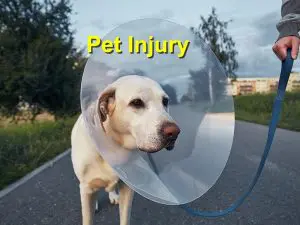How to treat ear tip injuries in pets
Although ear infection is common in dogs, ear tip injuries normally cause discomfort and challenges for pets. A common symptom that shows your dog has ear infection is that it will shake its head vigorously. This can cause a slight tear on the ear and may also form a blister. Activities like running or rough play when your canine soft ears encounter something sharp or rough can easily cause ear injuries.
Ears are typically vascular and that means they have a steady supply of blood that flows through them. Due to this, a lot of blood might come from a cut or small tear. Fortunately, you can ensure that your dog doesn’t lose a lot of blood so long as you address the issue with urgency.
How you can treat ear tip injuries in pets
Ears normally have slow healing ability since dogs are playful and this disrupts them from healing fast. And while scabs form an integral part of the healing process, they can come off quite easily when the dog is running or playing. The blood would easily start spilling out again all over the place and you might have to visit a vet.
Similarly, when blood blisters form, draining it might not really be helpful. If your dog has blood blisters, then you need to consider making a visit to your vet. In most cases. These blood-filled blisters or cysts are normally located on the soft inside part of the dog’s ear. And they often occur in canines that have thin ears.
Removing blood blisters
The vet will simply drain the blister and use stitches to reattach the peeled skin to prevent the deep skin tissue from getting contaminated. This process is done when your canine is anesthetized or sedated. However, your vet may also install a drain but this will depend on a number of factors like size, location, and how regular your canine gets blood blisters.
Keep the blistered area clean and dry
To ensure the injury heals within a short time, you need to keep the area dry, immobile and clean. While bandages don’t necessarily work for dogs, they are very helpful as they prevent re-injury. You need to get creative on how you use bandages on your canine in a way that can keep the ears immobile but not too bothersome.
Conclusion
You should ensure you dog is evaluated by a veterinarian when you notice an ear injury to prevent the problem from worsening.
References: Petmd, Vets-now, Petethevet




